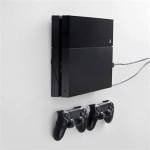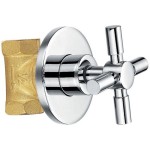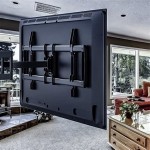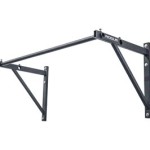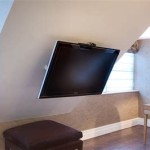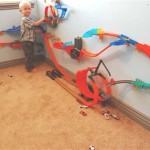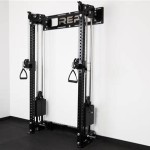Two-Hole Wall Mount Faucets: A Comprehensive Overview
Two-hole wall mount faucets represent a distinctive approach to bathroom and kitchen fixture design. Unlike traditional deck-mounted faucets that install directly on the sink or countertop, wall-mounted faucets extend from the wall, creating a clean, minimalist aesthetic and offering several practical advantages. This article provides a detailed exploration of two-hole wall mount faucets, covering their design, installation considerations, benefits, and key factors to consider when selecting one for your space.
The defining characteristic of a two-hole wall mount faucet is its installation method: the faucet body, spout, and handles are mounted directly onto the wall, typically above a sink or countertop. This configuration requires two separate holes in the wall – one for the hot water supply and one for the cold water supply. The spout and handles are then connected to these water lines, allowing for water flow control away from the sink deck itself. This design contributes significantly to the uncluttered look that is highly sought after in contemporary bathroom and kitchen designs.
The aesthetic appeal of two-hole wall mount faucets stems from their ability to free up valuable counter space. By eliminating the need for a faucet base on the sink, the countertop remains clean and streamlined. This is particularly beneficial in smaller bathrooms or kitchens where maximizing usable space is crucial. Furthermore, the elevated position of the spout can create a more dramatic and visually appealing focal point in the room.
The functionality of a two-hole wall mount faucet is also noteworthy. The wall-mounted design simplifies cleaning around the sink area, as there are fewer surfaces to wipe down. The absence of a faucet base also minimizes the potential for water to pool around the faucet, reducing the risk of mineral buildup and water damage. These faucets are available in a variety of styles, from sleek and modern to traditional and ornate, allowing homeowners and designers to find a model that complements their existing décor.
Key Point 1: Design and Variety
Two-hole wall mount faucets are available in a wide array of designs to suit diverse aesthetic preferences. The spout design is a central element. Options include straight spouts, curved spouts, gooseneck spouts, and waterfall spouts. The spout length, or reach, is a critical factor in selecting a faucet, as it must extend far enough to position the water stream directly into the center of the sink basin without being too long and causing splashing.
The handle design also contributes significantly to the overall aesthetic. Two-handle faucets, a common configuration for two-hole models, allow for precise temperature control by separately adjusting the hot and cold water flow. These handles can be lever-style, cross-style, or even more contemporary joystick or knob designs. The material and finish of the handles also play a crucial role in their appearance and durability. Common materials include brass, stainless steel, and zinc alloys, while finishes range from polished chrome and brushed nickel to oil-rubbed bronze and matte black.
Beyond the basic design elements, many two-hole wall mount faucets incorporate additional features. Some models include integrated aerators to reduce water consumption without compromising water pressure. Others feature ceramic disc cartridges for drip-free performance and increased longevity. Premium models may also offer features such as temperature memory, which allows the faucet to return to a pre-selected temperature setting each time it is used.
The style of the faucet must also complement the overall design of the bathroom or kitchen. Modern styles often feature clean lines, geometric shapes, and minimalist detailing. Traditional styles, on the other hand, may incorporate more ornate details, such as decorative escutcheons and curved spouts. Transitional styles offer a balance between modern and traditional elements, making them a versatile choice for a variety of spaces.
The finish of the faucet is another important consideration. Chrome finishes are known for their durability and resistance to corrosion, while brushed nickel finishes offer a warmer, more subtle look. Oil-rubbed bronze finishes can add a touch of rustic charm, while matte black finishes provide a contemporary and sophisticated aesthetic. The finish should be chosen to complement the other fixtures and hardware in the room, creating a cohesive and visually appealing design.
Key Point 2: Installation Considerations
Installing a two-hole wall mount faucet requires careful planning and execution. Due to the in-wall plumbing connections, professional installation is often recommended, especially if modifications to existing plumbing are required. Proper installation is critical to ensure leak-free performance and prevent potential water damage to the wall and surrounding areas.
Before beginning the installation process, it is essential to determine the appropriate mounting height for the faucet. This will depend on the height and style of the sink or countertop, as well as the desired aesthetic. A general guideline is to position the spout so that it is approximately 6 to 8 inches above the rim of the sink. However, this may need to be adjusted based on the specific dimensions of the sink and faucet.
The wall itself must be structurally sound to support the weight of the faucet and withstand the force of water pressure. If the wall is not adequately reinforced, it may be necessary to add additional support or backing behind the wall surface. This is particularly important for heavier faucet models or for installations in walls made of less durable materials.
Access to the plumbing within the wall is another critical consideration. The hot and cold water supply lines must be properly connected to the faucet body, and any necessary shut-off valves should be installed for easy maintenance and repairs. It is essential to ensure that all plumbing connections are watertight to prevent leaks and water damage.
The installation process typically involves drilling two holes in the wall to accommodate the faucet connections. These holes must be precisely aligned to ensure that the faucet is properly positioned and securely mounted. The faucet is then attached to the wall using mounting brackets and screws. Once the faucet is securely mounted, the water supply lines are connected, and the faucet is tested for leaks.
For new construction or remodeling projects, it is advisable to install a mounting block within the wall to provide a solid surface for attaching the faucet. This mounting block should be securely attached to the wall studs and should be made of a durable material, such as plywood or solid wood. The mounting block will provide additional support for the faucet and help to prevent it from loosening over time.
Key Point 3: Advantages and Disadvantages
Two-hole wall mount faucets offer several advantages over traditional deck-mounted faucets. As previously mentioned, the primary benefit is the clean, minimalist aesthetic that they provide. By freeing up counter space and eliminating the need for a faucet base, these faucets can create a more spacious and visually appealing environment.
Another advantage is the ease of cleaning. With no faucet base to wipe around, maintaining a clean sink area is significantly simplified. The elevated position of the spout also helps to prevent water from pooling around the faucet, reducing the risk of mineral buildup and water damage.
Two-hole wall mount faucets can also be a practical choice for accessibility. The wall-mounted design allows for greater flexibility in positioning the faucet, which can be beneficial for individuals with mobility issues. The spout can be positioned at a height and distance that is comfortable and easy to reach, making the sink more accessible.
Despite these advantages, two-hole wall mount faucets also have some potential drawbacks. The most significant disadvantage is the complexity of the installation process. As previously discussed, installing a wall-mounted faucet requires access to the plumbing within the wall, which can be challenging and may require professional assistance.
Another potential disadvantage is the cost. Two-hole wall mount faucets are often more expensive than traditional deck-mounted faucets, due in part to the more complex manufacturing and installation requirements. The cost of installation can also be higher, especially if modifications to existing plumbing are necessary.
Finally, the location of the water supply lines must be carefully considered when installing a two-hole wall mount faucet. If the water lines are not properly positioned, it may be necessary to reroute them, which can add to the cost and complexity of the installation. Additionally, once the faucet is installed, it is difficult to change its location without significant plumbing work.
In conclusion, while two-hole wall mount faucets offer a compelling aesthetic and functional alternative to traditional faucet designs, careful consideration must be given to the installation requirements and potential challenges before making a purchase. Weighing the advantages and disadvantages in the context of your specific needs and abilities is paramount to a satisfactory outcome.

Modern Wall Mount Bathroom Faucet

Minimal Mb294t Two Hole Stainless Steel Wall Mount Basin Faucet

Two Hole Wall Mounted Bathroom Faucet Cubic Modern Design Clearhalo

Grohe Allure Two Hole Wall Mount Bathroom Faucet S Size Royal Bath And Kitchen

Minimal Mb294t Two Hole Stainless Steel Wall Mount Basin Faucet

Isenberg Serie 260 7 Two Hole Chrome Wall Mounted Bathroom Sink Fauce Us Bath

Kohler Karbon Articulating Two Hole Wall Mount Kitchen Faucet

Unlacquered Brass Wall Mount Faucet Two Holes Etsy

Fss100rc Two Handle 2 Hole Wall Mount Service Sink Faucet Rough Polished Chrome

Concord Two Handle 2 Hole Wall Mount Kitchen Faucet Ks813sb 3d Model 3dsky Decor Helper

